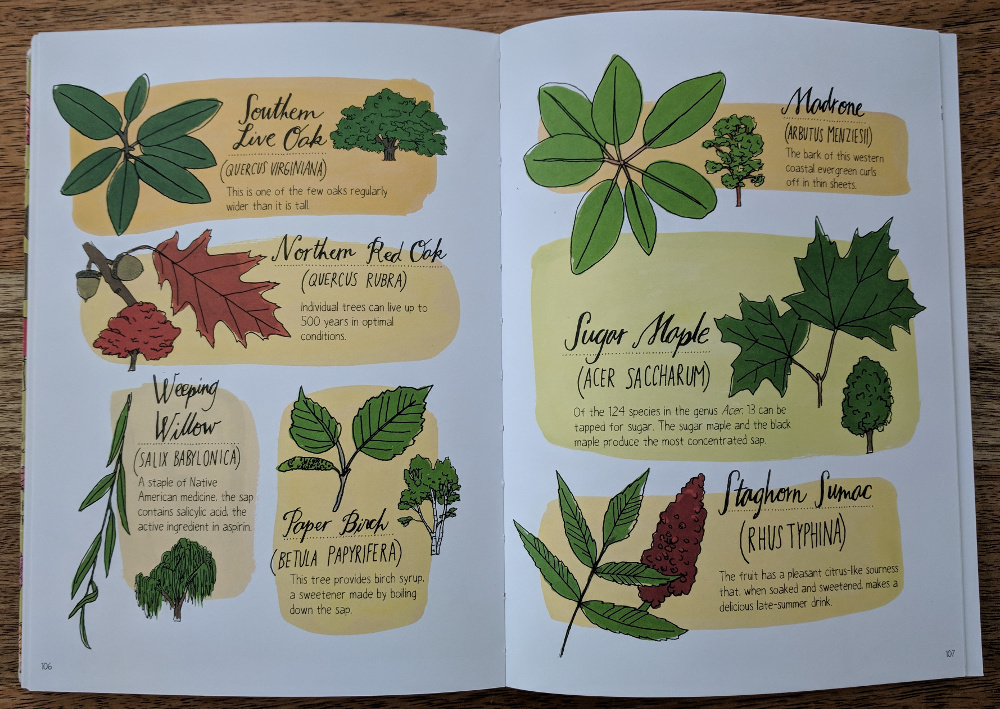Review: Nature Anatomy
Julia Rothman is an illustrator from New York; in Nature Anatomy: The Curious Parts & Pieces of the Natural World she expresses her love of nature through 223 pages filled with colorful sketches, brief explanations and descriptions.
The art is simple but elegant, conveying the most recognizable characteristics of a leaf, a mushroom or a butterfly in just a few strokes. The organization varies from page to page:
-
annotated illustrations (“anatomy of a flower”) with brief explanations;
-
illustrations without any text or explanation other than a species name;
-
illustrations with brief facts about a species (“Woodchuck: Woodchucks can climb trees if they need to escape”)
-
recipes and other offbeat material, e.g., instructions for printing plant patterns.

This kind of presentation is fairly typical for the book: elegant illustrations accompanied by one or two facts. (Credit: Julia Rothman. Fair use.)
Of course, the book can only sample the natural world (and it does so with a North American bias), but it does attempt to provide some broader explanations as well, e.g., about moon phases or the layers of Earth’s atmosphere.
Some of the text is in cursive, giving the book the feel of an intimate journal. That’s clearly the idea: making the complexity of nature less intimidating by focusing on its beauty and by conveying descriptions and explanations in a casual manner.
At the same time, this approach can no more than whet the appetite for more detailed explanations why nature is the way it is (for which speaking about evolution, which this book hardly does, is essential).
Is this approach suitable for getting young people excited about the natural world? I’m no longer a young reader, but if I was, I bet I would have been in equal parts frustrated and pulled in by this book; pulled in by its art, and frustrated by its failure to go beyond enumerating names and facts. I would give the book 5 stars for art and 3 stars for the text—a good purchase for extending one’s appreciation of the patterns of nature, if not necessarily for understanding them.
